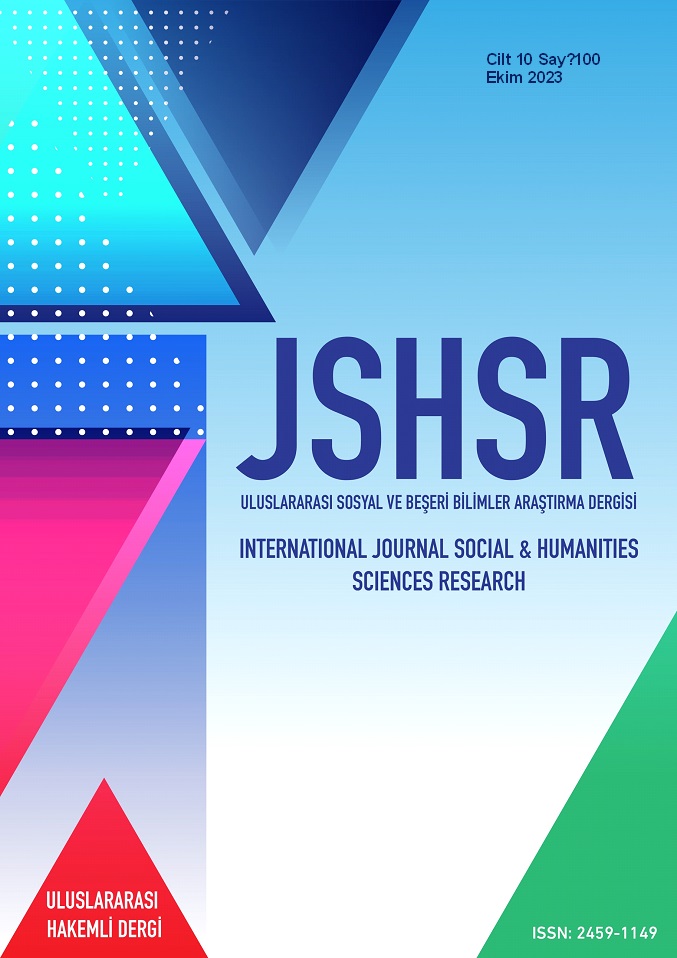The Poem "Tale'a'l-Bedru" in Terms of Vâkıâ and Music
DOI:
https://doi.org/10.5281/zenodo.10042383Keywords:
Tala al Badru, Music, HijrahAbstract
Islam is concerned with all human actions. It is not limited to acts of worship, punishments, and transactions, but encompasses all situations within the framework of "halal and haram". It is in this context that the Islamic tradition evaluates how people can show their joy and sorrow. In the Qur'an, hadith and history/history sources, there are examples of celebrations and joys that took place during the time of Rasūlullāh (peace be upon him), and based on these narrations, these events are evaluated in different contexts in different sciences. At this point, one of the most famous examples of celebrations and shows of joy is the song "Talea'l-badru" that the people of Medina sang while welcoming Rasûlullâh (saw) during his migration from Mecca to Medîna. In this study, we will try to examine the authenticity of this famous cheer, where and when it was sung, based on the narrations and the words of the cheer.
First, we will discuss the narrations that are reported in the sources as a show of joy by the people of the region at the arrival of Prophet Muhammad in Medīna and emphasize their reliability. Then, we will examine when and where this particular joyful song was sung. After giving information about the existing compositions, we will make a general evaluation
References
Ayverdi, İ. (2016). Misalli Büyük Türkçe Sözlük. Kubbealtı Neşriyat.
Beyhakî, A. b. H. (1988). Delâilü’n-nübüvve. Daru’l-Kütübi’l-İlmiyye.
Beyhakî, E. B. A. b. H. b. A. el-. (1344). Es-Sünenü’l-kübrâ (1-10). Dâiratü’l-Meârifi’n-Nizâmiyye.
Bezzâr, E. B. A. b. ‘Amr el-. (2009). Müsnedü Bezzâr. Mektebetü’l-Ulûm ve’-Hikem.
Buhârî, E. A. M. b. İ. (t.y.). Sâhîh’l-Buhârî, 6878. Daru Tavkin-Necât.
Bûsirî, A. b. E. B. (1403). Misbâhu’z-zücâce fî zevâidi İbn Mâce. Dâru’l-Arabiyye.
Câhız, A. b. B. (2003). el-Beyân ve't-tebyîn (3/282). Mektebetü'l-Hilâl.
Diyarbekrî, H. b. M. (t.y.). Târîhu’l-hamîs fî ahvâli enfesi’n-nefîs. Dâru Sâdır.
Ebû Ya’lâ, A. b. A. (1984). Müsned. Dâru’l-Me’mûn li’t-Türâs.
Hamevî, Y. (1995). Mu’cemü’l-büldân. Dâru Sâdır.
Heyet. (1999). Sünbâtî. İçinde El-Mevsûatü’l-Arabiyyetü’l-Âlemiyye (C. 13). Müessesetü A’mâli’l-Mevsûa Li’n-Neşri ve’t-Tevzî.
Irâkî, Z. A. (t.y.). Tarhu’t-tesrîb fî şerhi’t-Takrîb. Dâru İhyâi’t-Türâsi’l-Arabî.
İbn Ebî Şeybe, A. b. M. (1409). El-Muṣannef fi’l-eḥâdîsi ve’l-âsâr. Mektebetü’r-Rüşd.
İbn Hacer, A. b. A. (1379). Fethu’l-bârî şerhu Sahîhi’l-Buhârî. Dâru’l-Ma’rife.
İbn Hanbel, İ. A. (t.y.). Müsnedü’l-imâm Ahmed b. Hanbel (1-6). el-Mektebü’l-İslâmî/Dâru Sâdır.
İbn Kayyim, M. b. E. B. (1994). Zâdü’l-meâd fî hedyi hayri’l-ibâd. Muessetü’r-Risâle.
İbn Mâce, E. ʿAbdillâh M. b. Y. (t.y.). Sunen. Dâru İḥyâi Kütübi’l-ʿArabiyye.
İbn Salâh. (1392). Mukaddimetü İbn Salâh fî ulûmi’l-hadîs. Dâru’l-Hikme.
Önkal, A. (t.y.). Hicret. TDV İslâm Ansiklopedisi. Geliş tarihi 23 Eylül 2023, gönderen https://islamansiklopedisi.org.tr/hicret
Sâlihî, M. b. Y. (1996). Sübülü’l-hüdâ ve’r-reşâd fî sîreti hayri’l-ibâd. Dâru’l-Kütübi’l-İlmiyye.
Şerîf, S. (t.y.). Riyâd es-Sünbâtî. el-Mevsû’atü’l-Arabiyye. (2023) https://arab-ency.com.sy/details/5319
Şerîf, S. (1993). Es-Sunbâtî ve ceylü’l-amâlika. Talas.
Şürrâb, M. (1411). El-Me’âlimü’l-esîra. Dâru’l-Kalem.
Tayâlisî, E. D. S. b. D. b. el-Cârûd et-. (t.y.). Müsned Ebî Davûd et-Teyâlisî.
Turabi, A. H. (1997). İlk Dönem İslam Dünyasında Musiki Çalışmalarına Bakış. Marmara Üniversitesi İlahiyat Fakültesi Dergisi, 13-14-15, 225-248.
Zehebî. (1403). Siyeru a’lâmi’n-nübelâ. Müessesetü’r-Risâle.
Zürkânî, M. b. A. (1996). Şerhu’z-Zürkânî ale’l-Mevâhibi’l-ledünniyye. Dâru’l-Kütübi’l-İlmiyye.
Downloads
Published
How to Cite
Issue
Section
License
Copyright (c) 2023 INTERNATIONAL JOURNAL OF SOCIAL HUMANITIES SCIENCES RESEARCH

This work is licensed under a Creative Commons Attribution 4.0 International License.


